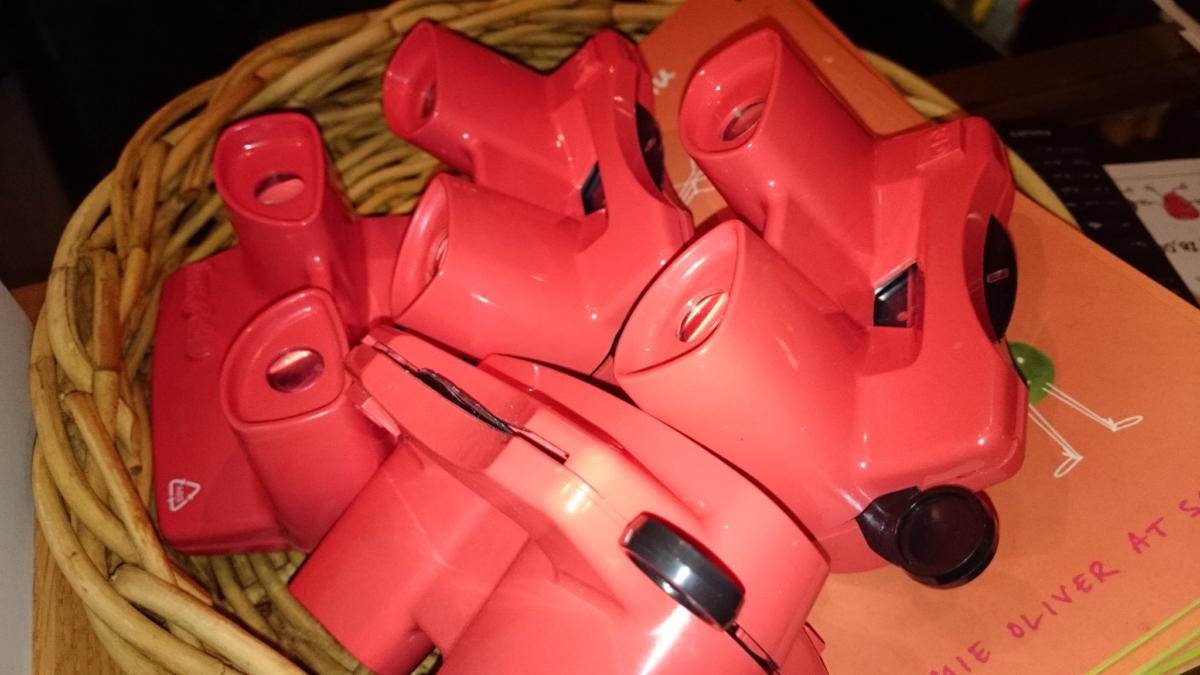Apple CEO, Tim Cook, keeps on dropping those big hints that new products are coming and that his company has some interesting ideas around Virtual and Augmented Reality. It all sounds super-exciting, but while the technology is powerful the actual concepts have a big history, so here’s 7 things you never knew about VR/AR.
Robert Barker
Some claim the first attempt at creating VR took place c.1792, at around the same time as the U.S. Constitution was being developed. Irish-born painter, Robert Barker, opened his Rotunda building in London, U.K.’s Leicester Square. This was a giant cylinder containing a huge 360-degree painting. Using clever lighting tricks he gave visitors the sensation of standing in his painting. The painting changed frequently, sometimes it was a place, others a battle scene. The illusion worked pretty well – the Rotunda was a tourist hot spot for 70 years.
Parallax sickness
You often come across complaints from people using VR-type kit that they sometimes feel seasick. The science behind it is different from the way motion sickness works, as its about perception of movement rather than actual movement itself. It’s the same thing that makes some people feel sick when experiencing the parallax motion effects on an iPhone. And it’s not new. Way back in 1794, young UK Queen Charlotte had to leave the Leicester Square Rotunda in a hurry. Why? She felt seasick. Was this the first time anyone suffered VR sickness?
Silly headsets
We know Apple has been developing its own smart eyeglasses for years. We also know that every VR system currently on the market (from Vive to Oculus and beyond) needs a hefty headset. We also know why. Way back in the 1830s, an inventor called Charles Wheatstone figured out that our brains process 2D images received by our two eyes in order to create on single 3D image. To demonstrate this he created a device that used a series of mirrors to combine images that created a real sense of being there for anyone wearing the contraption.
View Master
A few year’s later stereoscopes arrived on the scene: These used lenses to replace the mirrors and became so popular some claim every Victorian home had one. That’s before TV, movies, or games consoles, of course – but what goes around sure seems to come around. It certainly did so in 1940 when those View Master devices first appeared. These plastic goggles give you a sense of perception, depth and place using a system of circular discs containing colored images of 3D scenes.
Sensorama
Patented in 1962, Sensorama was like a photo booth. Invented by Morton Heillig, you would sit inside the contraption in order to be exposed to a stereoscopic 3D film and stereo speakers. This sensation of being immersed in a particular place was further enhanced by the booth’s use of wind fans, heat, and a vibrating chair. Sensorama users could experience six different two-minute VR experiences, including the feeling of driving a motorbike and a helicopter.
The Holodeck
Gene Dolgoff is a renowned global expert on 3D imagery, 3D holographics, digital projection, and LCD projection (and more). He even helped develop the US HDTV system. This means you’ve probably already been exposed to technologies Dolgoff helped develop. When it comes to the potential of VR, you may be surprised to learn you may have been exposed to another Dolgoff dream, The Holodeck concept used in Star Trek: The Next Generation. This is a hugely immersive VR environment in which near-real events take place. Some experts think these kind of experiences may become commonplace by 2024, but Cook’s statements and the inevitable release of powerful VR solutions means things may move faster than this.
Minority Report
AR (Augmented Reality) is probably best described as VR’s misunderstood younger brother. For me, one of the best ways to understand it is the scene in Minority Report in which you see John Anderton interact with virtual computers using a ‘floating’ 3D user interface. Another might be the sensation of being prompted with useful information you get when driving using the WayRay auto navigation device. While some people mock Facebook and Oculus for developing finger-tracking gloves that let users control items they come across in VR, it’s easy to imagine virtualized, movement-activated user interfaces in the physical world. It’s easy to imagine them because within developments in assistive technology they are already here.
Pokemon Go
I think there is huge potential within the VR/AR market. Think about Pokemon Go: as this report points out, the game is arguably one of the most successful business launches of all time, moving from an income of zero dollars to a billion dollars in just seven months. There’s nothing virtual about the VR gold rush. And Apple and others plan to grab some of it.
Google+? If you use social media and happen to be a Google+ user, why not join AppleHolic's Kool Aid Corner community and join the conversation as we pursue the spirit of the New Model Apple?
Got a story? Drop me a line via Twitter. I'd like it if you chose to follow me there so I can let you know when fresh items are published here first on Computerworld.






